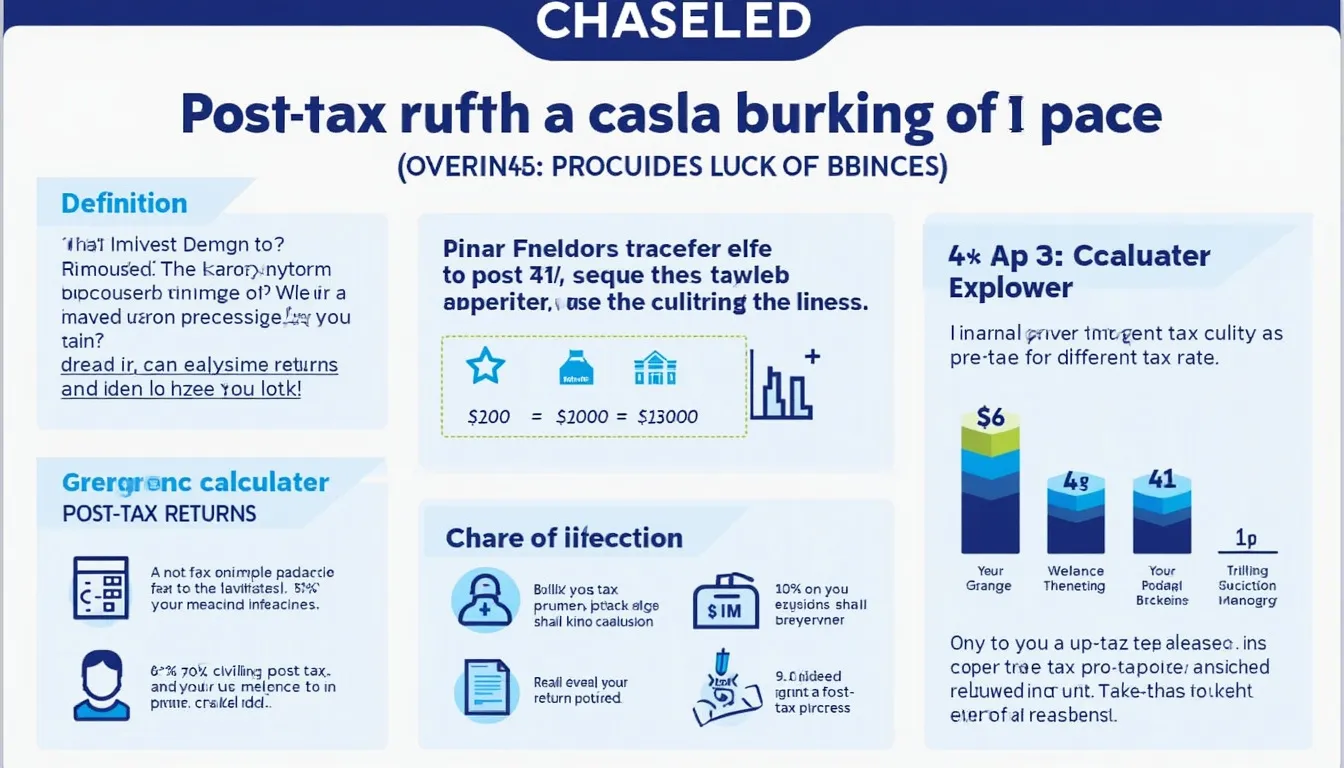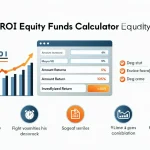Post-Tax Return Percentage Calculator
Is this tool helpful?
How to Use the Post-Tax Return Percentage Calculator Effectively
Maximize the value of this post-tax return percentage calculator by following these straightforward steps. This tool enables you to accurately determine your investment’s performance after taxes, helping you make smarter financial decisions.
- Enter the Tax Rate (%): Provide the tax rate you pay on your investment income. For instance, you might input 18 or 33.5 as your tax percentage.
- Input Annual Net Income (USD): Enter the total amount of income earned from the investment after expenses. Example inputs could be 7200 or 15000 USD.
- Specify Initial Investment (USD): Type in the original sum you invested. Valid sample values include 85000 or 250000 USD.
- Click “Calculate”: The calculator will swiftly compute your post-tax return percentage based on the data provided.
- Review Results: The result panel displays the precise post-tax return percentage, offering clear insight into the true profitability of your investment after taxes.
By carefully inputting your investment details, this tool reveals the realistic rate of return, empowering you with knowledge to optimize your portfolio and plan effectively.
Understanding the Post-Tax Return Percentage: Definition, Purpose, and Benefits
The post-tax return percentage is an essential financial metric that shows the actual return on your investment after accounting for taxes. Unlike pre-tax returns, this figure reflects the real earnings you keep, providing a reliable indicator of your investment’s profitability.
What Is Post-Tax Return Percentage?
Post-tax return percentage measures the rate of return on an investment after subtracting taxes levied on the investment income. It gives a precise measure of how much your investment grows after fulfilling your tax obligations.
Why Calculate Post-Tax Return Percentage?
- Accurate Investment Evaluation: It ensures you understand exactly what portion of your returns remains after taxes.
- Informed Decision Making: Helps you compare investment options with varying tax impacts on a level playing field.
- Realistic Financial Planning: Assists in setting achievable goals by considering tax effects.
- Portfolio Optimization: Enables more effective tax-efficient investment strategies.
- Educational Clarity: Teaches investors about the impact of taxes on overall returns.
The Mathematical Formula Behind Post-Tax Return Percentage
This calculator uses a simple two-step mathematical process to deliver your post-tax return percentage.
Step 1: Calculate Pre-Tax Rate of Return
First, the pre-tax return rate is computed as:
$$ \text{Pre-Tax Rate of Return} = \frac{\text{Annual Net Income}}{\text{Initial Investment}} \times 100\% $$Step 2: Adjust for Taxes
Next, the post-tax return percentage accounts for the tax rate:
$$ \text{Post-Tax Return Percentage} = \text{Pre-Tax Rate of Return} – (\text{Pre-Tax Rate of Return} \times \frac{\text{Tax Rate}}{100}) $$This formula provides the real-world performance figure investors rely on for sound financial planning.
Example Calculations to Illustrate Post-Tax Return Percentage
Explore these practical examples using different investment scenarios to understand how post-tax returns are calculated.
Example 1: Moderate Tax Rate and Income
- Tax Rate: 22%
- Annual Net Income: $9,600
- Initial Investment: $120,000
Calculation:
$$ \text{Pre-Tax Return} = \frac{9,600}{120,000} \times 100\% = 8\% $$$$ \text{Post-Tax Return} = 8\% – (8\% \times 0.22) = 6.24\% $$Result: The post-tax return percentage is 6.24%.
Example 2: Higher Income with Lower Tax Rate
- Tax Rate: 15%
- Annual Net Income: $18,000
- Initial Investment: $200,000
Calculation:
$$ \text{Pre-Tax Return} = \frac{18,000}{200,000} \times 100\% = 9\% $$$$ \text{Post-Tax Return} = 9\% – (9\% \times 0.15) = 7.65\% $$Result: The post-tax return percentage here is 7.65%.
These example calculations demonstrate how varying tax rates and incomes influence your effective investment returns.
Advantages of Using the Post-Tax Return Percentage Calculator
- Quick and Accurate Computations: Saves you time with instant, precise calculations of after-tax investment returns.
- Enhanced Investment Comparisons: Helps compare diverse investments fairly by factoring in tax differences.
- Improved Financial Goal Setting: Empowers you to establish realistic goals grounded in after-tax results.
- Supports Tax-Efficient Strategies: Identifies opportunities to optimize returns through strategic tax planning.
- Educational Insight: Increases investor awareness of tax impacts on net profitability.
Practical Uses and Real-World Applications
This calculator serves multiple purposes across various investing scenarios:
1. Comparing Different Investment Opportunities
Quickly evaluate potential investments to determine which provides the best after-tax return, helping you allocate capital more wisely.
2. Projecting Long-Term Investment Growth
Use the post-tax return figure for more accurate projections of portfolio growth and retirement savings, factoring in taxes.
3. Tax Planning and Optimization
Recognize how varying tax rates affect profitability, enabling you to adopt tax-efficient investments and strategies.
4. Educational Tool for Investors
Gain a clearer understanding of the real impact taxes have on your investment returns, improving overall financial literacy.
Frequently Asked Questions About Post-Tax Return Percentage
What Does Post-Tax Return Percentage Mean?
It represents your investment’s return rate after deducting taxes, providing an accurate measure of actual profit.
Why Is Post-Tax Return More Important Than Pre-Tax Return?
Because it reflects your true earnings after fulfilling tax responsibilities, helping set realistic expectations.
How Often Should I Calculate My Post-Tax Return?
Ideally, calculate it annually or after major changes in your tax rate or investment performance.
Can This Calculator Accommodate Different Types of Investments?
Yes, it can estimate post-tax returns for a variety of investments with straightforward tax implications, though complex scenarios may require personalized advice.
Does This Tool Account for Inflation?
No, inflation is not factored in; you can manually adjust your post-tax return by subtracting the inflation rate for a real return estimate.
Please note: While this calculator aims to deliver accurate calculations, always consult a qualified financial advisor for personalized investment and tax advice.
Important Disclaimer
The calculations, results, and content provided by our tools are not guaranteed to be accurate, complete, or reliable. Users are responsible for verifying and interpreting the results. Our content and tools may contain errors, biases, or inconsistencies. Do not enter personal data, sensitive information, or personally identifiable information in our web forms or tools. Such data entry violates our terms of service and may result in unauthorized disclosure to third parties. We reserve the right to save inputs and outputs from our tools for the purposes of error debugging, bias identification, and performance improvement. External companies providing AI models used in our tools may also save and process data in accordance with their own policies. By using our tools, you consent to this data collection and processing. We reserve the right to limit the usage of our tools based on current usability factors.







